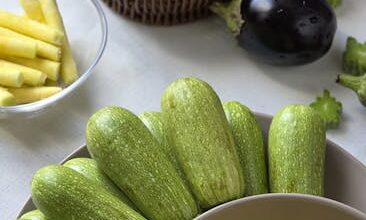The Quest for the ‘Perfect’ Sip: Deconstructing Luxury Hydration

In a world overflowing with options, from the ubiquitous plastic variety to stylish stainless steel, it seems everyone has their go-to water bottle. They’re practical, essential, and, let’s be honest, usually an afterthought when it comes to budgeting. But what if I told you a company has spent eight years, developed 10,000 prototypes, and is now selling a water bottle for a staggering $300? Enter Okapa, with their luxury water bottle claiming to redefine the very act of drinking H2O. My initial reaction? A skeptical eyebrow raise, followed by genuine curiosity: What in the world justifies such an eye-watering sum?
For most of us, hydration is a simple necessity. We fill a bottle, we drink. The experience is, well, just that – drinking. But Okapa isn’t targeting the “just drink water” crowd. They’re aiming for something more profound, something that elevates a mundane habit into a mindful ritual. This isn’t just about holding liquid; it’s about a meticulously crafted journey from bottle to palate, promising an unparalleled sensory encounter. To truly understand this phenomenon, we need to peel back the layers and look beyond the price tag.
The Quest for the ‘Perfect’ Sip: Deconstructing Luxury Hydration
When a product enters the market with a price point that makes most people gasp, it usually signals one of two things: unparalleled innovation or audacious marketing. In Okapa’s case, they’re leaning heavily on the former. Eight years and 10,000 prototypes isn’t a casual weekend project; it’s a significant investment in research and development. This isn’t just about finding a new material; it’s about pushing the boundaries of what a water vessel can be.
So, what exactly does “redefining the experience of drinking H2O” entail? We can only speculate without holding one, but the implications are fascinating. Perhaps it’s about temperature regulation that borders on scientific precision, keeping water perfectly chilled or warm for hours on end, without compromise. Or maybe it’s about a unique mouthfeel or flow rate, designed to deliver water in a way that enhances its taste or encourages more conscious sipping. It could even involve advanced filtration or purification mechanisms built directly into the bottle, promising the purest possible taste no matter the source.
Beyond Stainless Steel: The Okapa Engineering Marvel
Think about the typical high-end water bottle today. It’s likely vacuum-insulated stainless steel, perhaps with a stylish powder coating. These are functional, durable, and keep drinks cold. But Okapa’s proposition suggests something far more complex. We’re talking about a level of engineering typically reserved for medical devices or aerospace components.
Imagine materials that are not only durable but also impart zero taste, are incredibly lightweight yet robust, and perhaps even possess antimicrobial properties that eliminate the need for constant, rigorous cleaning. The 10,000 prototypes hint at an obsessive refinement of every curve, every seal, every mechanism. It’s likely a testament to ergonomics – how the bottle feels in your hand, how easily it opens, how effortlessly water flows. This isn’t just a container; it’s a piece of advanced personal technology disguised as a hydration accessory.
The Psychology of Exclusivity: Why We Pay More
Even with groundbreaking engineering, a $300 water bottle still needs a market. This is where consumer psychology and the allure of luxury goods come into play. We live in an era where wellness and self-optimization are paramount. People are increasingly willing to invest in products that promise to enhance their health, comfort, or daily rituals. A luxury water bottle slots right into this narrative, positioning itself not just as a tool, but as an investment in a lifestyle.
Brands like Okapa tap into our desire for exclusivity and status. Owning a product that is perceived as superior, rare, or exceptionally well-designed can be a powerful motivator. It’s a statement, a subtle nod to one’s discerning taste and willingness to invest in the very best, even for something as fundamental as hydration. Much like a high-end watch or a designer handbag, its value extends beyond mere utility; it becomes an extension of identity.
Is It Worth It? Decoding Value vs. Price
The perennial question: is it “worth it?” The answer, as always, is deeply personal and subjective. For the average consumer, spending $300 on a water bottle might seem absurd, an extravagant waste. For them, a $20 bottle from a reputable brand serves its purpose perfectly well.
However, for a specific niche – perhaps early adopters of wellness technology, ultra-minimalists who value singular, perfectly designed items, or individuals for whom financial constraints are not an issue – the value proposition shifts. If the Okapa bottle genuinely delivers on its promise to “redefine the experience of drinking H2O” in a tangible, meaningful way, then for these individuals, it might indeed be worth the investment. It’s about perceived value, emotional connection, and the luxury of choice.
Consider the environmental angle too. While the initial cost is high, if the Okapa bottle is built to last a lifetime, discouraging the purchase of multiple lesser bottles, it could be argued as a more sustainable choice in the long run. Of course, this only holds true if users commit to its longevity and don’t treat it as a fleeting trend item.
The Ripple Effect: Okapa and the Future of Hydration Tech
Whether Okapa becomes a runaway success or a niche curiosity, its existence alone is significant. Products at the extreme ends of the price spectrum often serve as bellwethers for future trends. Okapa’s $300 water bottle might be a prototype for the next generation of personal hydration devices.
Could we see more integrated “smart” features become standard, not just tracking water intake, but perhaps analyzing water quality in real-time or offering personalized hydration recommendations? Could material science innovations, first debuted in products like Okapa, eventually trickle down to more affordable options, enhancing durability, taste neutrality, or insulation across the board? The pursuit of the “perfect sip” could inspire widespread innovation in an often-overlooked market.
Even if most of us won’t be shelling out hundreds for our next water bottle, Okapa forces us to reconsider our assumptions about everyday objects. It pushes the boundaries of design, engineering, and marketing, making us question what we value and why. It reminds us that even the simplest acts, like drinking water, can be subject to intense scrutiny and reimagination, driving innovation in unexpected places.
So, what’s the deal with Okapa’s $300 water bottle? It’s more than just a container; it’s a statement, a testament to meticulous engineering, and a fascinating exploration into the psychology of luxury and wellness. It challenges our perceptions of value, pushing the boundaries of what we might expect from an item as commonplace as a water bottle. Whether you see it as an extravagant indulgence or a visionary piece of design, Okapa has certainly sparked a conversation, proving that even in the world of hydration, there’s always room to innovate, disrupt, and, for some, redefine the experience, one expensive sip at a time.





